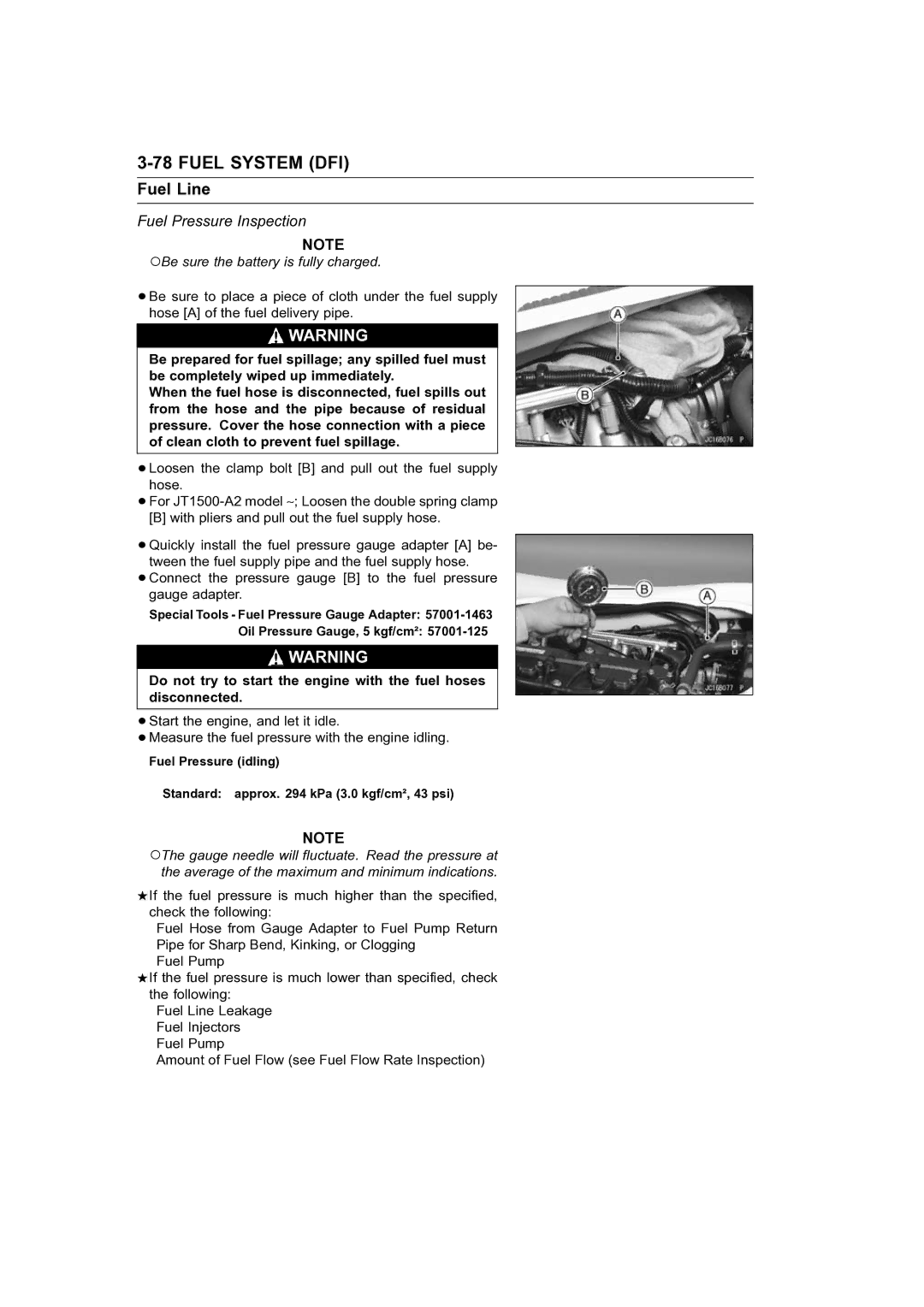
3-78 FUEL SYSTEM (DFI)
Fuel Line
Fuel Pressure Inspection
NOTE
○Be sure the battery is fully charged.
•Be sure to place a piece of cloth under the fuel supply hose [A] of the fuel delivery pipe.
![]()
![]() WARNING
WARNING
Be prepared for fuel spillage; any spilled fuel must be completely wiped up immediately.
When the fuel hose is disconnected, fuel spills out from the hose and the pipe because of residual pressure. Cover the hose connection with a piece of clean cloth to prevent fuel spillage.
•Loosenhose. the clamp bolt [B] and pull out the fuel supply
•For
•Quickly install the fuel pressure gauge adapter [A] be- tween the fuel supply pipe and the fuel supply hose.
•Connect the pressure gauge [B] to the fuel pressure gauge adapter.
Special Tools - Fuel Pressure Gauge Adapter:
![]()
![]() WARNING
WARNING
Do not try to start the engine with the fuel hoses disconnected.
•Start the engine, and let it idle.
•Measure the fuel pressure with the engine idling.
Fuel Pressure (idling)
Standard: approx. 294 kPa (3.0 kgf/cm², 43 psi)
NOTE
○The gauge needle will fluctuate. Read the pressure at the average of the maximum and minimum indications.
![]() If the fuel pressure is much higher than the specified, check the following:
If the fuel pressure is much higher than the specified, check the following:
Fuel Hose from Gauge Adapter to Fuel Pump Return Pipe for Sharp Bend, Kinking, or Clogging
Fuel Pump
![]() If the fuel pressure is much lower than specified, check the following:
If the fuel pressure is much lower than specified, check the following:
Fuel Line Leakage Fuel Injectors Fuel Pump
Amount of Fuel Flow (see Fuel Flow Rate Inspection)
